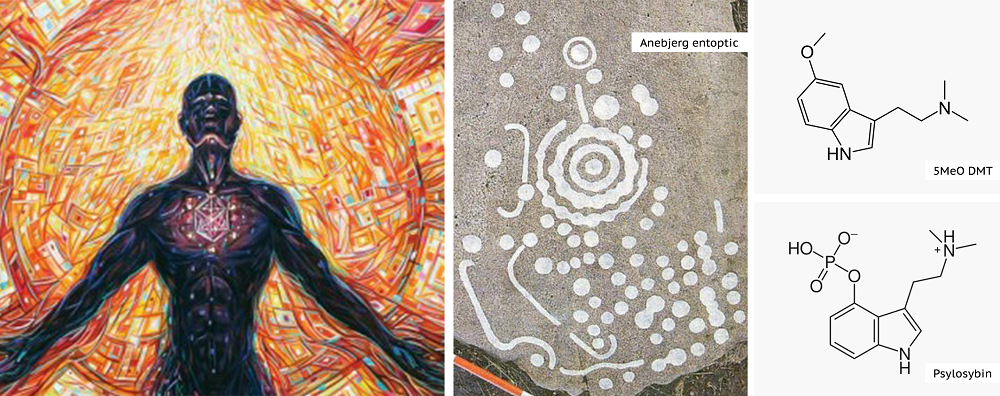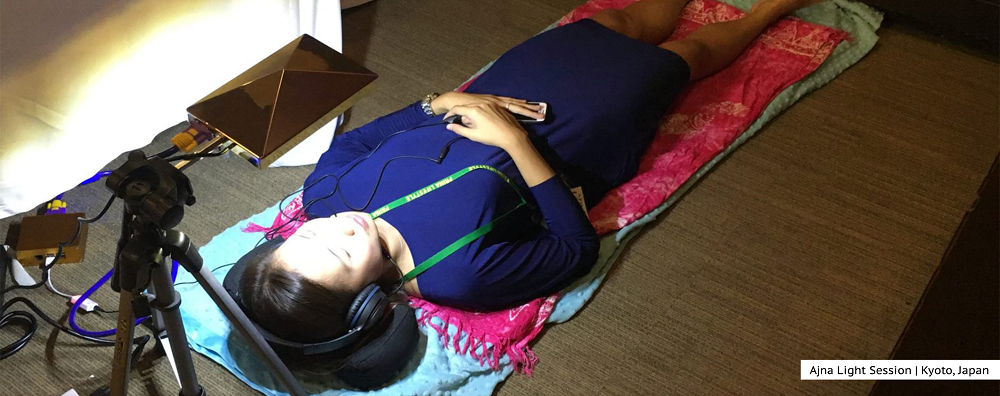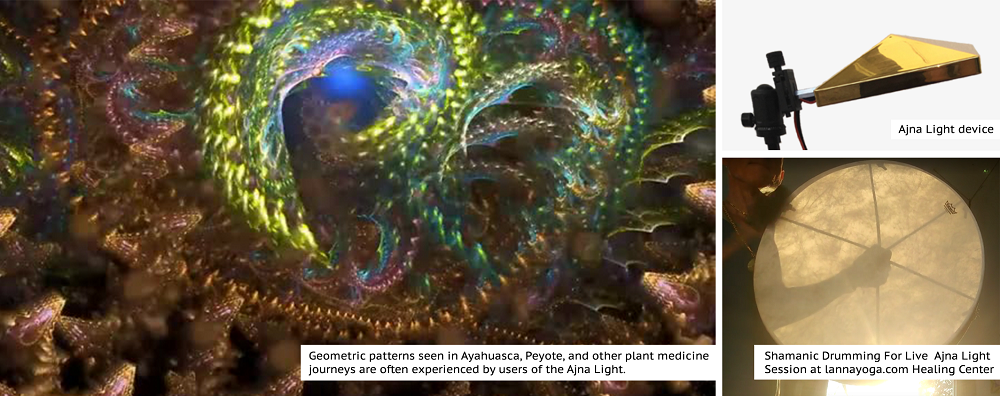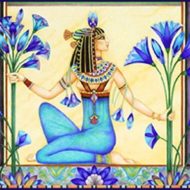Dreams and trance states, and inner visual experiences are expressed in the visual cortex at the back of the brain through the neurotransmitter DMT and its cousin Psilocybin. They are naturally occurring and have been part of our cultural experience through the ages, as evidenced by iconography and ancient stories passed down orally from generation to generation.

Psychedelic neurotransmitters are concentrated in the synaptic vesicles to a high enough level to have a neurological effect. They are inhibited during normal waking consciousness by the enzyme Mono-Amine Oxidase. They alter perception by facilitating non-standard interconnection of areas of the brain. This unusual stimulation takes the user out of conventional mental separation consciousness, in which the ego perceives itself as disconnected from nature, and in competition with others for scarce resources.
There are indications, based on the geometric shapes used in paleolithic cave paintings, that psychedelic plants were the inspiration for these images. The oldest acknowledged cave painting is a bull, dating back over 40 000 years, at Lubang Jeriji Saléh cave, East Kalimantan in Borneo.

Shamans and native people in the Americas, Asia, Europe and Africa have left orally transmitted stories which are filled with the elemental beings such as goblins, elves, fairies and nature spirits often experienced by people in altered states of consciousness.
The ancient Hindu sacred text called the Rig Veda consistently point to the Amanita muscaria mushroom as the source of the mystical drink Soma. In fact the Rig Veda records the growth and change of color of the Amanita muscaria mushroom. The Rig Veda can be dated back to 3500 BC, but it’s oral history must be much older.
The value of these plant medicines is that they give a transcendent insight into life and its meaning, outside of the self-aware reactive “normal” state of consciousness.
The psychedelic experience is particularly sought after by younger people as they leave childhood and need to make sense of their lives in a world which is culturally, nutritionally, and spiritually disconnected from nature through the use of technology for convenience.

Directly experiencing meaning in life can, however, also be facilitated through the use of technology. A powerful example is the Ajna Light which uses 5 pulsed 10W LED lights to activate the melanopsin pathway from the retina to the thalamo-cortical region in the brain and from there to the pineal gland and visual cortex. The double Tesla plate and phi geometric capstone design of the gold plated pyramid create a clearly felt subtle energy field around the user’s head.
The Ajna Light, along with the Pyralight (see products page) are powerful wellness tools to support healing and increase neuroplasticity. Here is a video interview showing how they brought a light therapist who had the lights back from an end of life diagnosis in ICU after a serious accident:

The same geometric patterns seen in ayahuasca, peyote, and other plant medicine journeys are often experienced by users of the Ajna Light.
These entoptic images are called Kluver Forms after the German neuroscientist and psychologist who worked at the University of Chicago from the 1930s to 1963. who identified the four basic groups: (1) tunnels and funnels, (2) spirals, (3) lattices, including honeycombs and triangles, and (4) cobwebs. Mandalas and other sacred geometric symbols derive from these forms. The Ajna Light directly stimulates the V1 area of the brain shown to be responsible for these images. Tunnels of light (the same as reported in near death experiences) are a common phenomenon in Ajna Light journeys, as the user goes into the “out of body” state of consciousness.

The second type of visual experience common to psychedelic and Ajna Light journeys are called eidetic visions.
An eidetic image is a vivid mental image, independent of an external event or memory. These can include symbolic images such as Buddhas, shamanic figures, deceased family members, past life experiences, and futuristic images which appear very clear and real, and have intense emotional meaning to the person seeing them. They are dreams, but experienced while awake under the Ajna Light, under the influence of plant medicines or during trance states. These lucid dream visions are common for users of the Ajna Light who are able to relax into the dissociated visionary state. The Ajna Light facilitates lucid dreaming by stimulating the thalamo-cortical region of the brain using the melanopsin pathway. The thalamo-cortical region of the brain is the switch between inner and external sense perception and is switched to inner perception every night when asleep.

For more information about the Ajna Light please visit ajnalight.com
